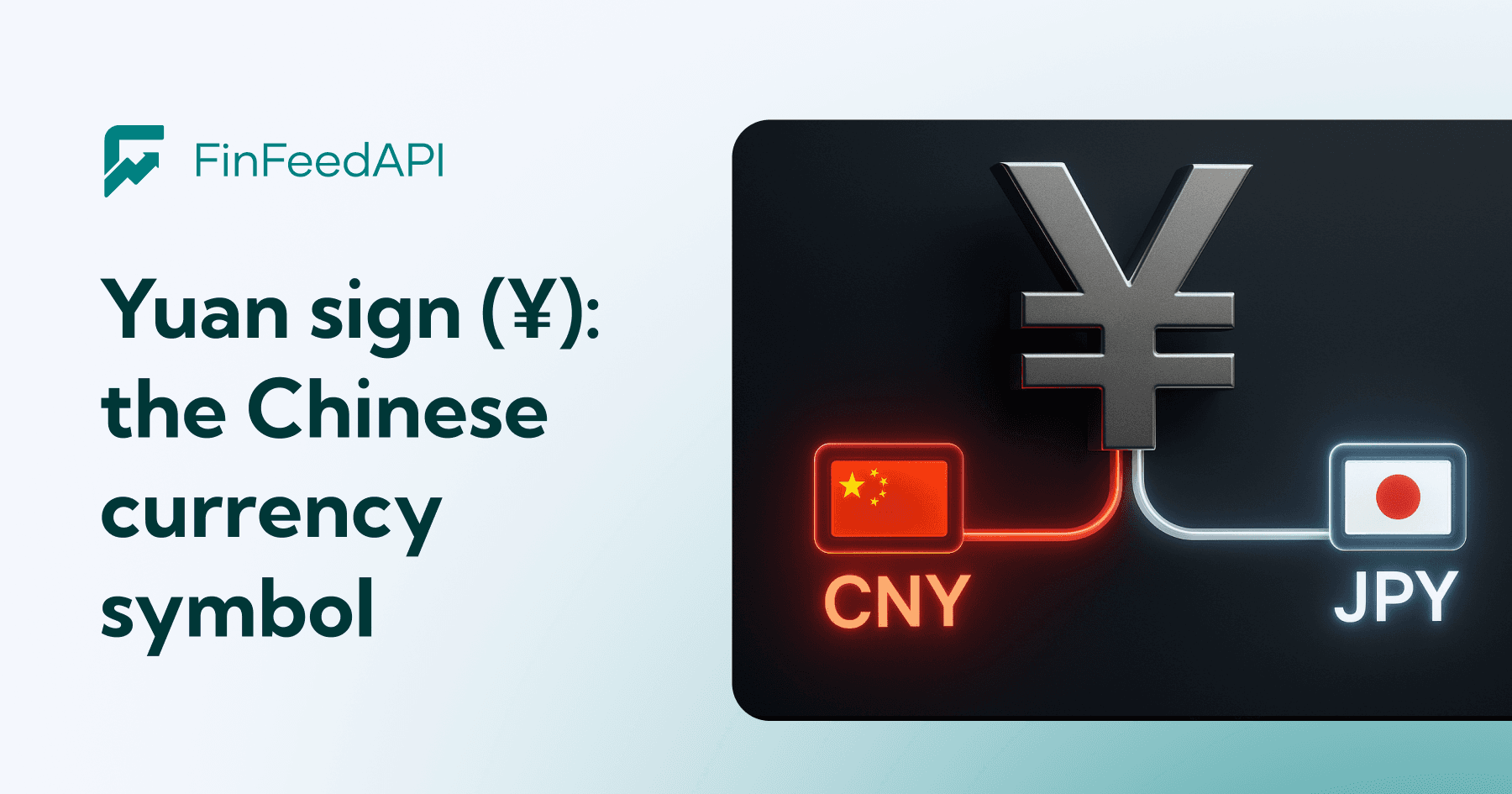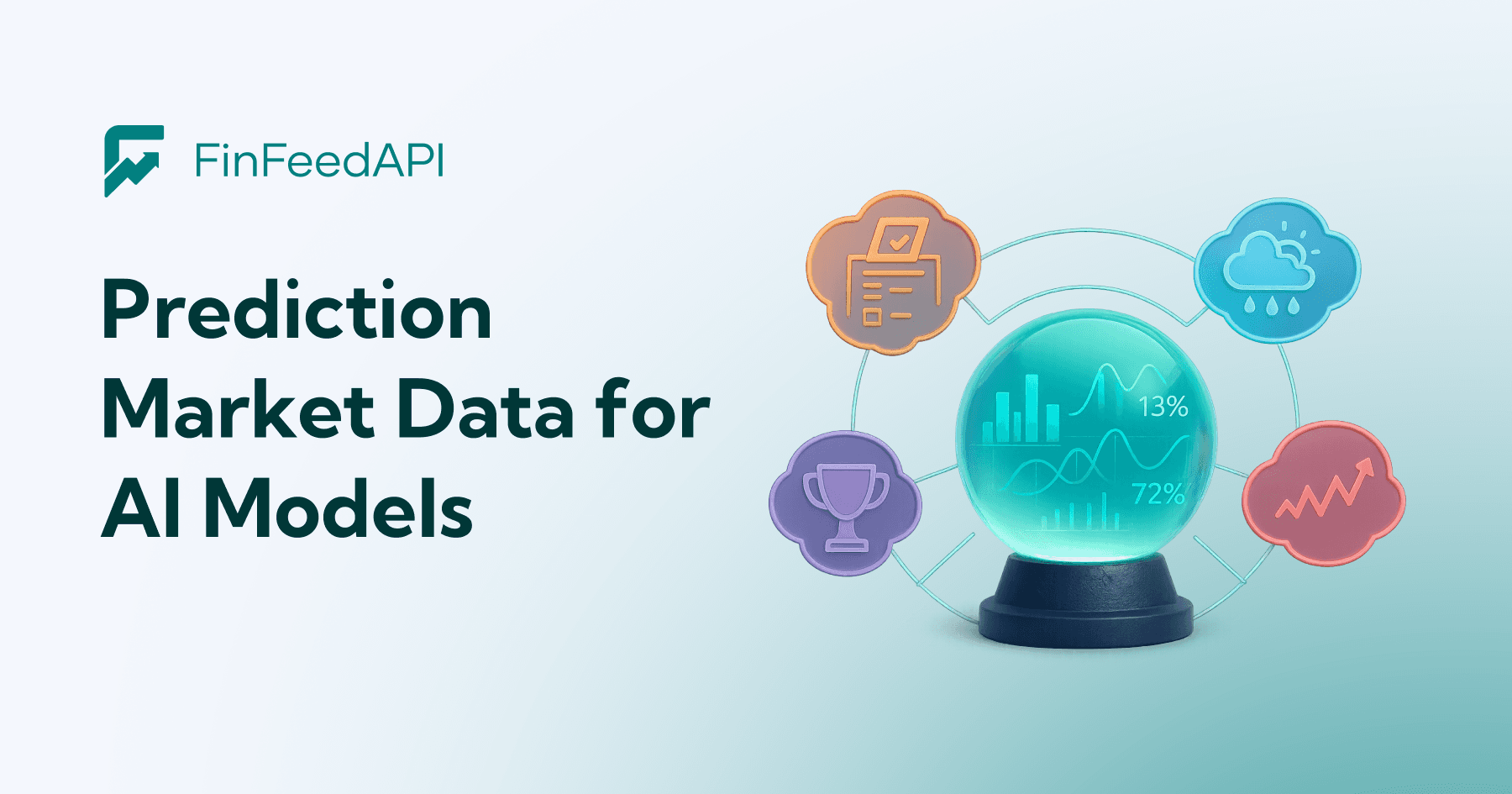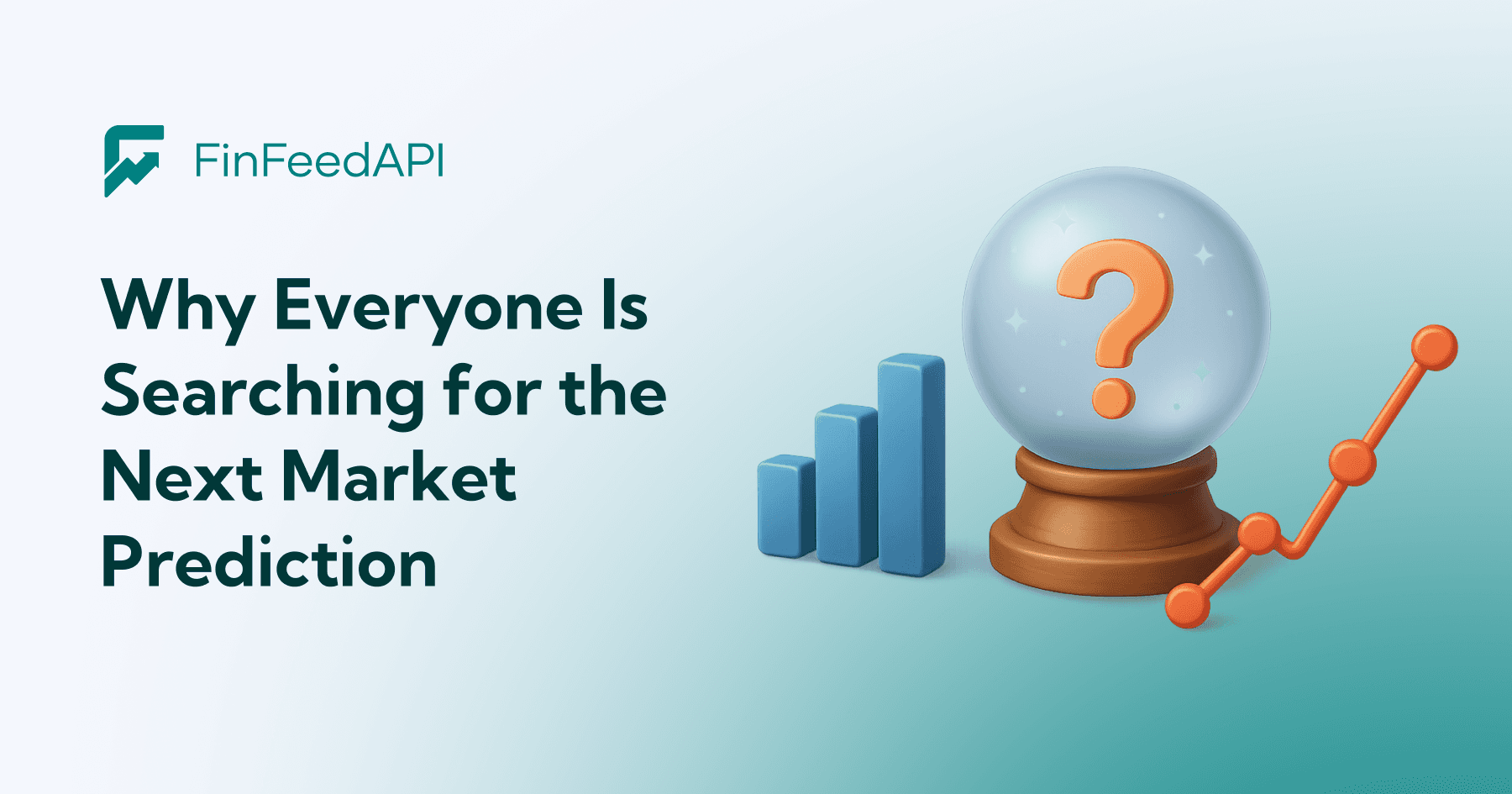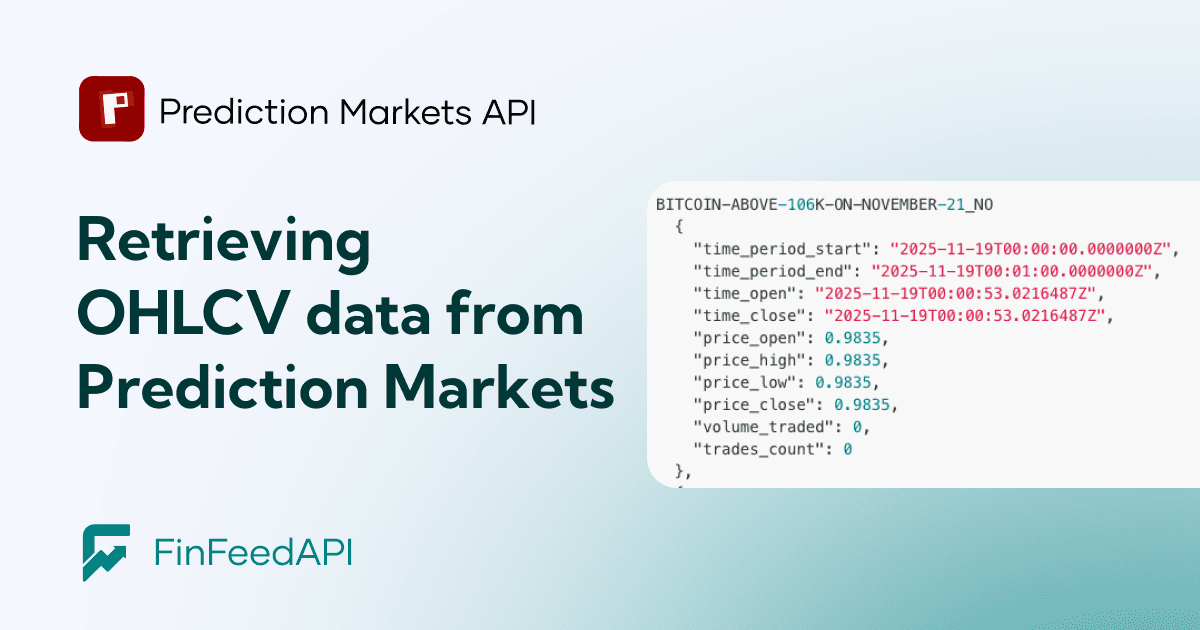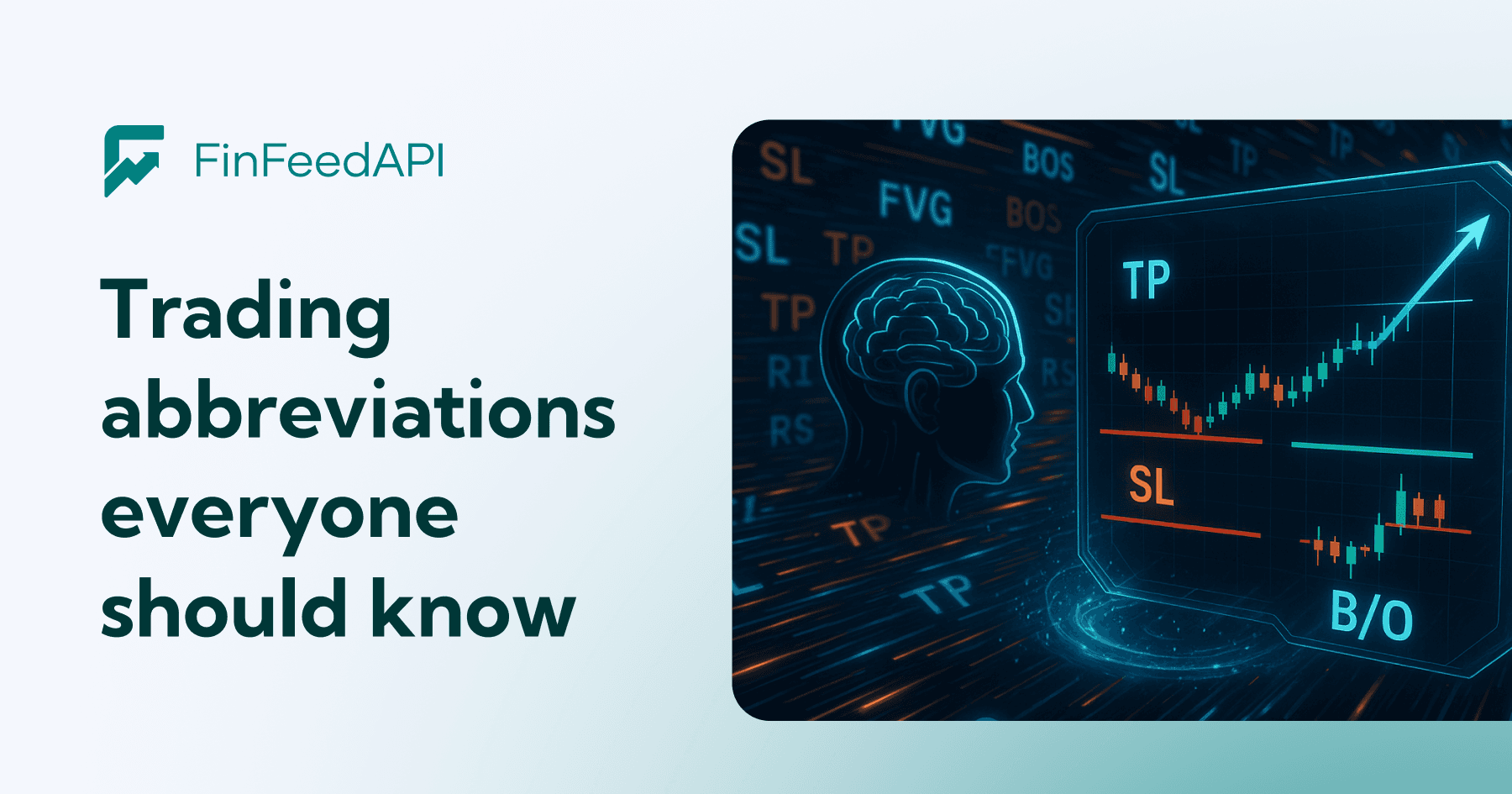Every serious financial product starts with the same ingredient: data.
Not hype.
Not dashboards.
Just raw, reliable numbers.
Real-time prices show what’s happening right now.
Historical data shows the patterns that actually matter.
Fundamental data explains why a company performs the way it does.
If you’re building anything in fintech — a trading tool, a market screener, an analytics dashboard, or a portfolio tracker — you need all three. And you need them in a format that doesn’t fight you.
This is where a great financial data API separates itself. Not by claiming to be “powerful,” but by delivering clean data instantly, consistently, and at global scale.
Let’s break down what matters most.
Why Financial Data Matters in Development
Most fintech apps fall into one of three categories:
- Real-time apps that show quotes and market moves as they happen
- Analytical apps that rely on deep historical data for backtesting or research
- Fundamental tools that dig into earnings, financial statements, and company health
What ties them together?
They all depend on market data that is accurate, structured, and delivered fast.
A strong API turns messy market information into something predictable — an endpoint you can hit, parse, and plug directly into your workflow. The difference between a good API and a frustrating one is often the difference between shipping a feature in days… or being stuck rewriting code for weeks.
What Shapes a Standout Stock Market API?
You can judge a financial data API in five minutes if you know what to look for.
The best ones feel effortless — they “disappear” into your code.
Here’s what makes that possible:
1. Wide Market Coverage
Not just U.S. stocks.
Not just crypto.
A real API covers:
- Global equity markets
- Index data
- Forex and currency pairs
- ETFs and mutual funds
- Commodities
- (Bonus) Alternative datasets like interest rates or sentiment
One data source means one integration — a huge win for development time.
2. Deep Historical Depth
If an API can’t give you 10–20 years of clean history, your backtests and models suffer.
Deep history lets you:
- Spot long-term market cycles
- Stress test strategies
- Build machine-learning models
- Create smarter dashboards
Shallow data = shallow insights.
3. Fundamental Data That Actually Matters
Modern financial apps don’t just show prices. They analyze businesses.
That requires:
- Balance sheets
- Income statements
- Cash flow statements
- Earnings call transcripts
- Key financial ratios
If the API gives you this in clean JSON or CSV, you save hours of scraping, cleaning, and normalizing.
4. Real-Time Reliability
Real-time data should feel instant. No long waits. No stuttering.
Developers look for:
- Low-latency streaming (WebSocket)
- Stable intraday updates
- Clear timestamp precision
- No random missing candles
Good real-time feeds make your product feel alive.
5. Developer-Friendly Design
This is where many APIs fail.
The best ones keep things simple:
- Clean endpoint structure
- Real code examples
- Logical symbols + parameters
- Fair rate limits
- CSV + JSON both available
- No “surprise paywalls” in the docs
When an API respects the developer, development moves fast.
EOD Historical Data: The Foundation of Market Analysis
End-of-Day (EOD) data is the dataset most developers use the most. It shows:
- Daily OHLCV
- Smooth long-term trends
- Clear signals for technical indicators
- Reliable information for backtests
If the API lets you pull EOD data from dozens of exchanges with one consistent format, your workflow becomes 10x easier.
This is where many coders finally feel the difference between “large dataset provider” and “tool built for developers.”
Beyond Prices: Alternative Data That Gives You an Edge
Modern apps need more than candles and volumes.
Some APIs now include:
- Interest rates
- Market sentiment
- Economic indicators
- Futures and macro signals
These datasets turn simple charts into powerful insights. For example:
- A forex trader might combine interest rates + currency history
- A stock screener might filter companies by sentiment + fundamentals
- A research tool might overlay inflation with S&P 500 performance
Developers building advanced tools never say “just give me prices."
They want context.
Fundamental Data: The Part Most APIs Ignore
Financial statements expose the truth behind a company:
- Is revenue actually growing?
- Is debt piling up?
- Is cash flow healthy?
- Did margins collapse last quarter?
APIs that offer this reliably are rare — and developers love them because they unlock “real analysis,” not surface-level charts.
If a platform also includes earnings call transcripts, it’s even better. That data fuels:
- NLP analysis
- Sentiment scoring
- Automated valuation models
- Competitive research tools
This is the kind of functionality that turns a basic app into a fintech product worth paying for.
What Developers Actually Build With All This
When a financial API is done right, it powers almost anything:
- Screener dashboards
- Portfolio trackers
- Python backtesting scripts
- Research tools for analysts
- Algorithmic trading bots
- Market news aggregators
- Multi-market mobile apps
Everything hinges on one thing: the quality and breadth of the data.
If the API is thin, your app is thin.
If the API is rich, your app instantly feels premium.
Pricing That Matches Your Needs
Good pricing follows a simple rule:
Pay for what you actually use.
No massive upfront fees.
No opaque restrictions.
No “enterprise-only” datasets hidden behind emails.
Developers want to start free, test the waters, then scale predictably as their app grows. A transparent model makes that possible.
Wrapping It Up
What the “Best” Financial API Really Looks Like
A great market data API isn’t about buzzwords, branding, or shouting “real time” on every page. It’s about reliability, clarity, and depth — an API that:
- covers multiple global markets
- offers years of historical data
- includes fundamentals and alternative datasets
- updates in real time with low latency
- integrates cleanly into any project
- scales with you instead of limiting you
When those pieces click together, development becomes smoother, faster, and way more fun.
Where FinFeedAPI Fits In
FinFeedAPI was built for exactly this purpose: giving developers a single, unified API for global stocks, forex, commodities, fundamentals, and deep historical data — all with clean endpoints and developer-friendly documentation.
If you want to:
- pull 15+ years of historical OHLCV
- access over 40+ global exchanges
- fetch real-time exchange rattes
- get fundamentals in structured JSON
- scale without rewriting your integration
FinFeedAPI gives you all of this through one consistent interface.
You can start with a free key and build immediately — no delays, no friction.
Explore FinFeedAPI and start building better financial products today.




